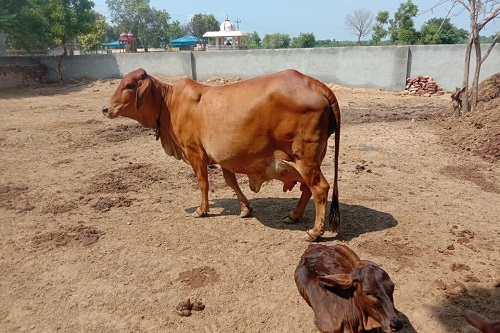Introduction
The dry period of a dairy cow should be considered an important phase of the lactation cycle. The dry period is the period before calving thatcows are not milked, which is traditionally about 6 to 8 weeks. In the first three weeks following drying off, cows are at a high risk of developing mastitis because they are undergoing physiological changes and are more exposed to bacteria from the environment because the keratin plug is not fully developed for all quarters. Common infections are environmental streptococcal species, Klebsiella spp., and Enterobacter spp. occur more frequently early in the dry period. On the other hand, E. coli infections tend to occur immediately before calving. The main functions of the dry period, are to treat the cow with antibiotics (persistent subclinical mastitis), to allow the cow a rest period before calving, and to maximize milk yield in the next lactation. Adequate nutrition and appropriate disease prevention of the cow at this time will ensure optimal health, milk production, and reproductive performance during the lactation following calving. Therefore, the feeding and management of dry cows are very important from an economic aspect.

Nutrition and management
Nutrition during the far-off period impact the cows during the close-up dry period and early lactation. Cows with a standard dry period (6 to 8 weeks) have a negative energy balance (NEB) for the first 2 to 3 months in lactation. A severe NEB and mobilization of body reserves to compensate for this energy deficit, associated with altered metabolic status and greater incidence of diseases such as ketosis, displaced abomasum, mastitis, and decreased fertility. Diets of close-up cows should contain more metabolizable protein and energy than diets of far-off dry cows, but should still contain controlled amounts of both energy and fiber to ensure adequate feed intake after calving. Diets of close-up cows can also contain forages that are lower in potassium, such as corn silage, and grain products to help prevent milk fever after calving. Adequate levels of vitamin E and selenium in dry cow rations appear to be important for udder health at calving and in early lactation. This effect may be mediated through enhanced resistance mechanisms. It is important to provide adequate space, ventilation, bedding, and lighting to ensure cleanliness and comfort. Minimizing the stress i.e environmental, social and metabolic, as it can affect feed intake, immune function, and overall health and productivity of cows around the time of calving. Heat stress should be prevented by providing proper cooling through the use of shade, fans, and sprinklers as heat stress reduces the amount of developing mammary tissue which results in low milk production in the following lactation.
Dry cow therapy
During the dry period, mammary cells renew at a faster rate than when cows would be milked up to calving. This results in a large concentration of renewed mammary cells at the moment of calving which explains the high peak milk yield in the next lactation after a dry period. Dry cow therapy is using intramammary antibiotics or other products immediately after the last milking of lactation. It reduces the frequency of new infections during the dry period and the incidence of clinical mastitis at freshening. Only approved commercial antibiotic products formulated specifically for dry cow therapy in a single dose should be used. These products contain high levels of one or more antibiotics in a slow-release base which will maintain therapeutic levels in the dry udder for a significant length of time. Internal teat sealants are theoretically more likely to prevent new intramammary infections which persist at least 100 days with long dry periods, than the infusion of a long-acting intramammary antibiotic because an effective antibiotic concentration after infusion persists only longer than 70 days in glandular secretions. Inclusion of a potent antibiotic against Streptococcus spp., β-lactamase–producing Staphylococcus aureus, and Trueperella pyogenes. Cloxacillin and cephalosporins are very popular for the treatment of such bacteria. A recommended treatment is cephapirin or sodium cloxacillin in a slow-release base with an expected cure rate of 80 per cent against streptococci and 60 per cent against S. aureus.
Conclusion
Drying off cows abruptly, administering veterinarian-recommended dry cow therapy, and using a teat sealant will help protect cows from pathogens during the dry period and prevent mastitis in the following lactation. Nutrition requirements should be fulfilled depending on the phase and length of the dry period, will prevent transition cow disorders, and ensure maximum milk production in the following lactation.




Be the first to comment